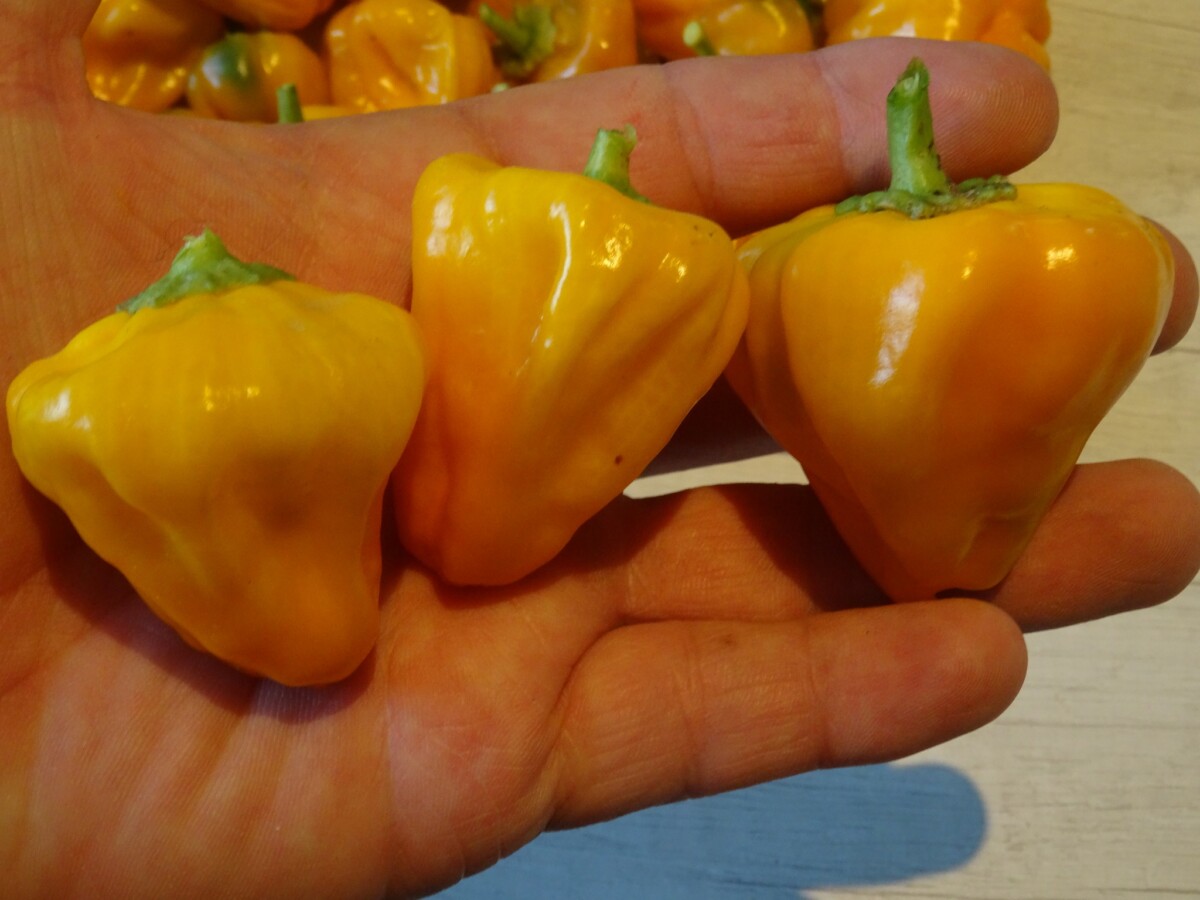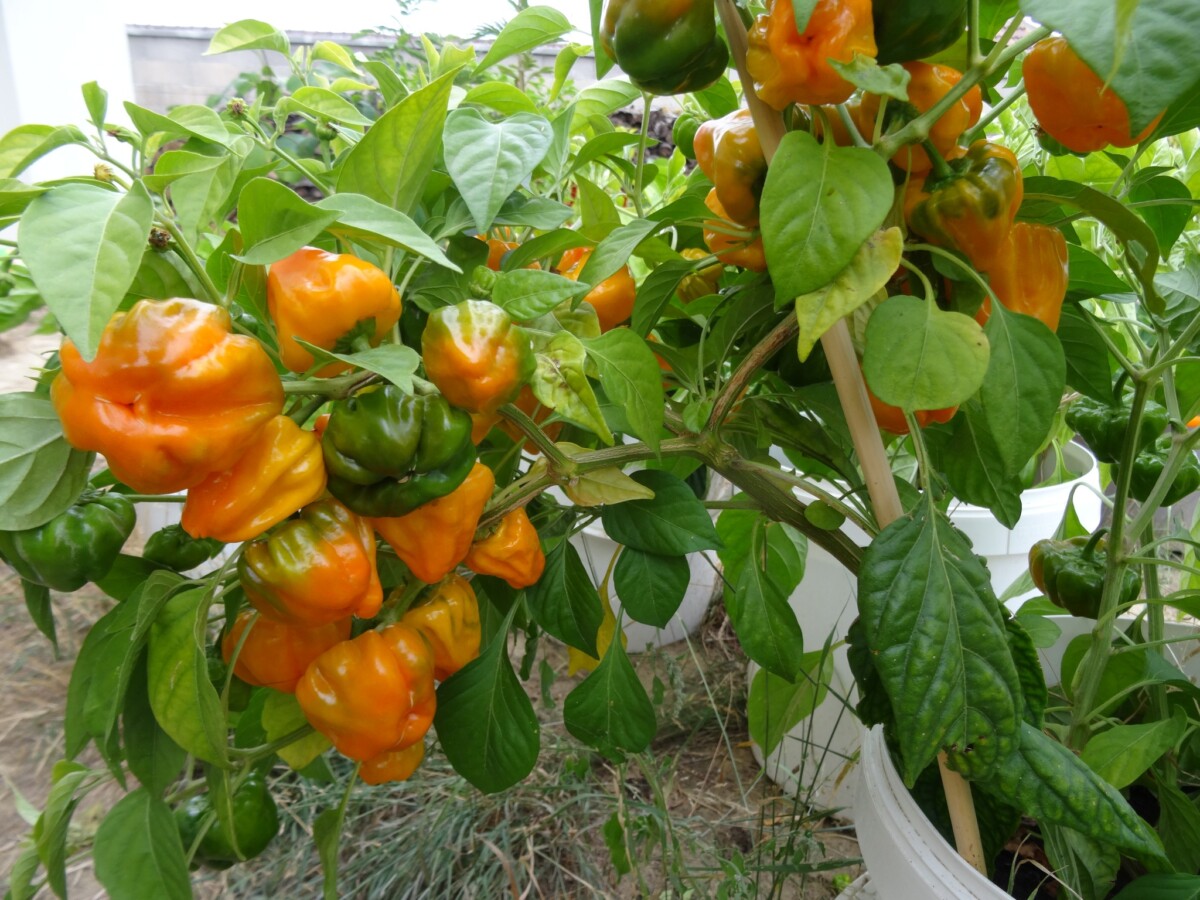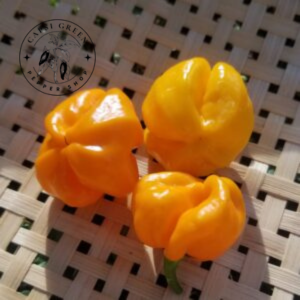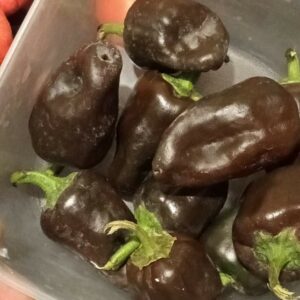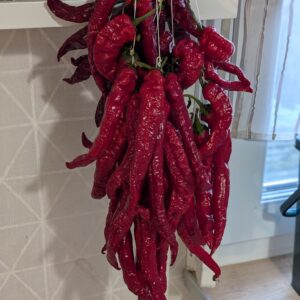Description
Among the pepper species native to the Americas and belonging to the Capsicum Chinense family, the Scotch Bonnet pepper takes its name from its shape which, with its crushed appearance, resembles a Scotman bonnet (known as a Tam o’Shanter hat). The Scotch Bonnet pepper is also known as Bahama Mama, Jamaican pepper, Bahamian pepper, Martinique pepper, Boabs bonnet, Scotty beef, Bonney bell pepper or Caribbean red pepper. The Scotch Bonnet pepper is grown in the Caribbean islands, Guyana, the Maldives and Uganda (East Africa). Although there is no firm evidence as to the origin of the Scotch Bonnet pepper, it is thought to have originated in Central and South America. The Habanero pepper is often confused or misrepresented as the Scotch Bonnet pepper and, although they are very similar and closely related, they are not identical. The Scotch Bonnet pepper is often compared to the Habanero pepper because they are two varieties of the same species, but with different pod types (the Scotch Bonnet having a wrinkled top and flattened base). Both Scotch Bonnet and Habanero peppers have a fine, waxy flesh with a similar level of intensity and flavor. The subtle difference lies in the spiciness, which varies slightly between the two. The Habanero has a fruity, apricot-like taste and a floral aroma. Scotch Bonnet is not as intense, is slightly sweeter and has a flavor profile more reminiscent of tomato, with notes of apple and cherry, while being slightly smaller. Scotch Bonnet ranks between 100,000 and 350,000 units on the Scoville scale. Scotch Bonnet was the first Caribbean pepper to be known by its specific name and widely used for export. As one of Jamaica’s main agricultural products, the pepper is grown in most of the country’s fourteen regions. Jamaica faces many challenges with this pepper, as they are rarely able to satisfy the high demand for the product in their own country, let alone meet the growing international demand for it.Scotch Bonnets add flavor to many cuisines and dishes around the world, and are frequently found in hot sauces and condiments. These peppers are most popular in Barbados, the Cayman Islands, Guyana, Grenada, Haiti, Jamaica, Costa Rica, Suriname and Trinidad & Tobago, as well as in West African cuisine. But it’s probably best known for its distinctive flavor in Jamaican jerk chicken and jerk pork dishes. open pollination
bag of 15 seeds

